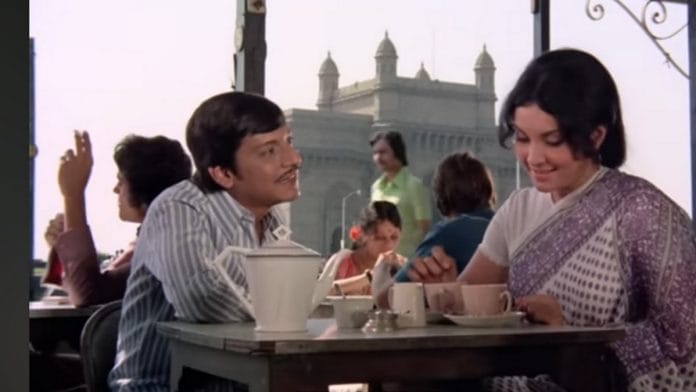Mumbai: In the movie Chhoti Si Baat, Amol Palekar’s character Arun fantasises about taking his crush Prabha to a breezy cafe with the Gateway of India in the background. It’s classic old Bombay charm. But just like Arun’s dream date, that cafe never existed—it was built just for the 1976 film.
This nugget of trivia is just one of the many stories shared on Basu Da’s Bombay, a 4-kilometre heritage walk through Mumbai’s streets via the lens of Basu Chatterjee’s films, known for their humour, heart, and celebration of humble lives.
Led by 24-year-old film historian Eshan Sharma, the founder of history collective Karwaan Heritage, the walk retraces the footsteps of characters from films like Rajnigandha, Chhoti Si Baat, Piya Ka Ghar, and Baton Baton Mein, offering a nostalgic glimpse of Bombay in the ’70s and ’80s.
“For any outsider, who is not originally from the city, to be at the Gateway of India is a moment of having arrived in Bombay, the city of dreams. This scene (in Chhoti Si Baat) made that statement,” said Sharma, who launched the walk last year and has done his Master’s research on the intersection of Nehruvian propaganda and cinema.
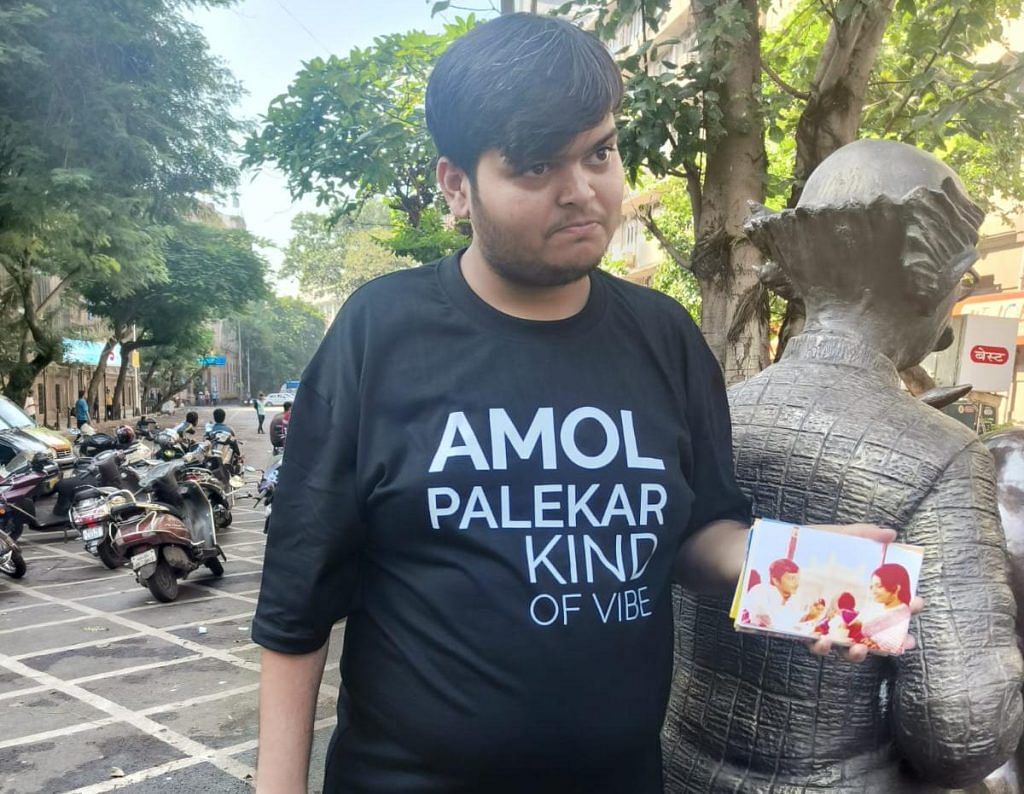
The tour, which starts at Pizza by the Bay and winds through Marine Drive, Fort, and Kala Ghoda before ending at Jehangir Art Gallery, accommodates around 30 people at a cost of Rs 850 per head (Rs 600 for students). The next walk is scheduled for Sunday, 27 October.
On a recent Sunday, the group was an eclectic mix of about 20 people—film students, college goers, tourists from other cities, and married couples looking to make their weekend memorable. All were either film buffs, Mumbai lovers, or both.
Over three hours, Sharma weaves together Chatterjee’s Bombay, a city that was changing rapidly but still holding on to its small moments—sharing chai, daydreaming at a bus stop, catching a movie at Eros. And in many ways, that Bombay is still the story of today’s Mumbai.
“Mumbai is a modern city, whose story starts with colonisation, first by the Portuguese and then the British. We are still colonising it—reclaiming the sea to make bridges and claiming from nature to make tall high rises,” he said.
Chatterjee’s films captured this transition, balancing the old and the new, the fast pace and the quiet pauses. And through the walk, people get to revisit these spaces and see how they’ve changed.
Also Read: Basu Chatterjee told simple, heartfelt stories that had no heroes, only people like us
Why Basu Da
Mumbai’s story, like its skyline, is always being rewritten. Standing at the walk’s starting point, Marine Drive’s Pizza by the Bay, it’s hard to picture that the Arabian Sea once lapped at the steps of the Western Railway building down the road. But this reclaimed road mirrors the ever-evolving story of Mumbai—including its changing portrayal in cinema.
Before the group sets off, Sharma plays a song from CID (1956) on his portable speaker: “Ae dil hai mushkil jeena yahaan, zara bachke, zara hatke, yeh hai Bombay meri jaan.”
This song, he said, captures the first image that cinema created of Bombay—fast-hustling city where everyone is after money. This was reinforced by a scene in Shree 420 (1955), where Raj Kapoor’s wide-eyed newcomer asks a beggar if people in Bombay are deaf. “They are both deaf and blind,” replies the beggar. “Inke kaan kuch nahi sun sakte siva rupai ki jhankaar ke” (Their ears can hear nothing except the jingling of rupees).
But by the 1970s, something shifted. Mumbai—still fast and chaotic—began to be romanticised.
“A film creates an impression of a city one may have never visited,” Sharma said. “So much history can be studied through films.”
For his Master’s thesis from Maharaja Sayajirao University of Baroda, Sharma focused on films made during the Emergency in the 1970s. This led him to zoom into Basu Chatterjee—one of the few “apolitical” filmmakers of that time. While contemporaries like Gulzar tackled political themes in films like Aandhi and Anmol, Basu Da centred his stories on everyday people.
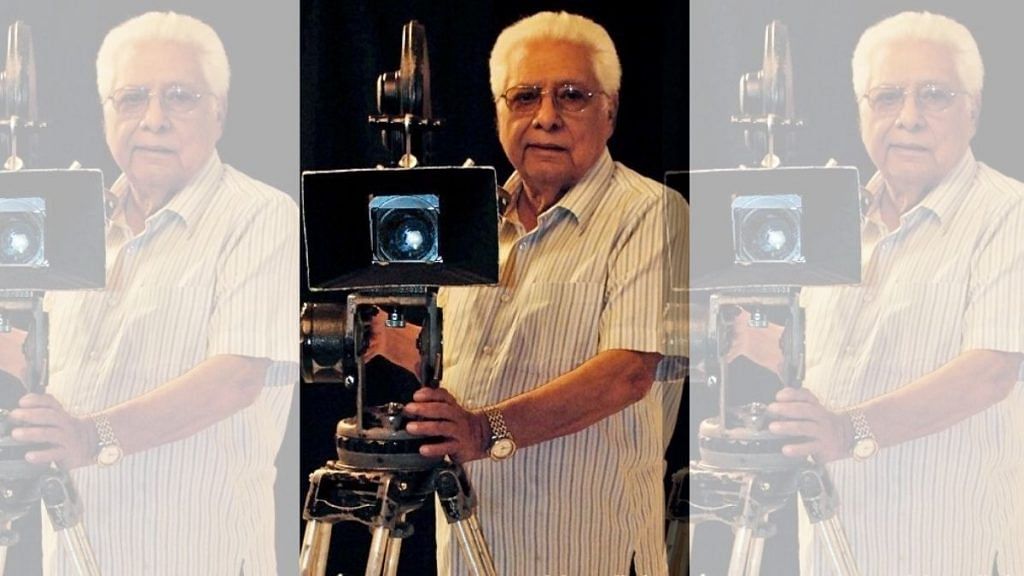
Many films from the 1970s were dominated by the Angry Young Man—born out of the political and social turmoil of the time. But Chatterjee’s characters were more anxious than angry. Arun, the lead in Chhoti Si Baat, is a docile and under-confident man. He doesn’t fight or rebel, yet fantasises about being powerful.
Sharma has spent the last three years writing and speaking about Mumbai in cinema and creating Basu Da’s Bombay walk.
“When filmmakers were making political stands and making films about the plight of the country, Basuda stood out for me, as a creative who didn’t bother very much about politics,” he said. “I have sat through much of his filmography. Let me tell you, not all are great but they are statements in themselves.”
Big-city dreams
There’s nearly 70 years of Bollywood history packed into Gaylord, the cafe opposite Churchgate station and the second stop on the walk. Jazz legend Chic Chocolate once played here, seats were reserved for composers Shankar-Jaikishan, and film stars like Dilip Kumar and Raj Kapoor were regulars. But for Basu Da’s Chhoti Si Baat protagonist Arun, it was simply the stuff of daydreams.
“Gaylord mein chai piyenge, Eros mein picture dekhenge,” he fantasises at the bus stop in one scene.
This collision of middle-class aspirations and everyday realities is exactly what made Basu Da’s work so relatable. And it was informed by personal experience.
“I’ve seen the journey, the pain and the struggle of the common man, and that’s what I’ve always tried to show,” he said in an interview.
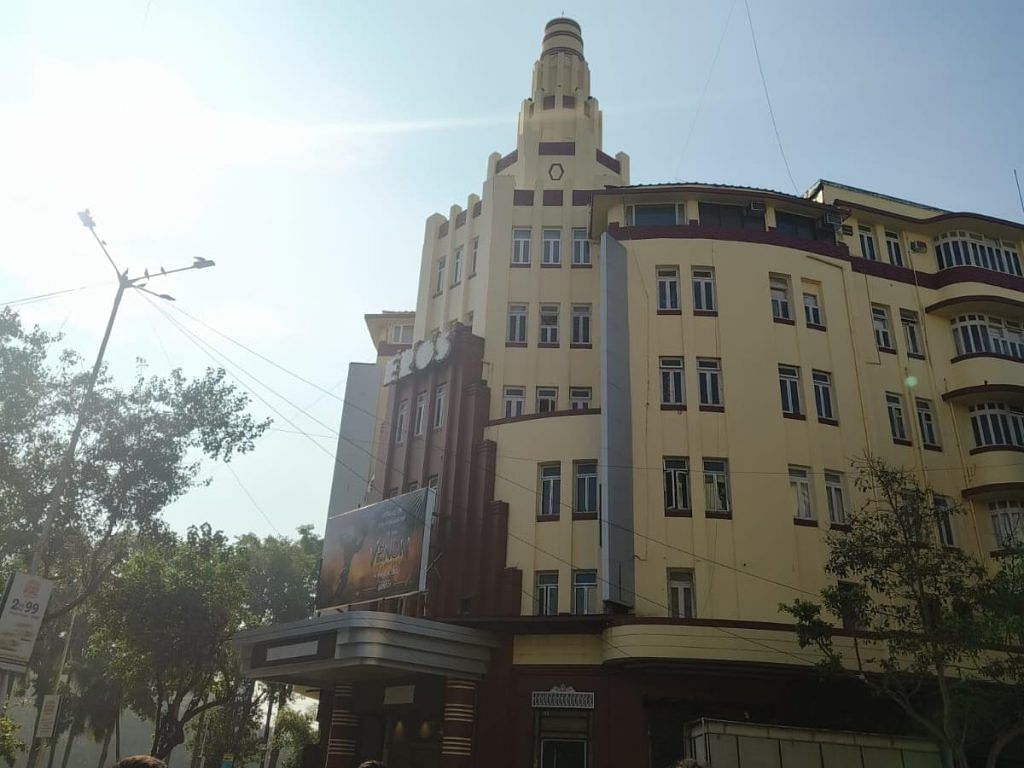
Born in Ajmer and schooled in Agra, Basu Chatterjee arrived in Bombay in 1948 with a job at the coastal artillery as a draftsman. He settled into a one-room kitchen in Colaba, close to his office. Inspired by Shankar, a famous cartoonist at Hindustan Times, Basu started sketching, learning to use satire as a tool for social commentary. Soon thereafter, he took up a part-time job at a magazine called March (later renamed The Current) and then later at Blitz. Rather like one of his underdog characters, he toiled as a cartoonist for 18 years before taking the leap into filmmaking.
Yet, in all his years of quiet dreaming, he was a cinephile, often frequenting Eros Cinema—the next stop on the walk. When the exclusive Bombay Film Society turned him down for membership, he didn’t sulk—he started his own club, Film Forum, with two friends. Through it, they bagged the rights to Rajender Yadav’s novel Sara Akash, which became his directorial debut in 1969.
Inspired by the Italian neorealist film Bicycle Thieves, Basu Da used non-professional actors to make Sara Akash (1969). It was the first of his “middle-of-the-road” films—neither fully mainstream nor arthouse.
Also Read: ‘Mard hoti toh collector hoti’ — Basu Chatterjee’s Apne Paraye is a study in family dynamics
Beneath the stardust
Basu Da’s Bombay wasn’t glamorous; it was a city of strivers, migrants, and the overlooked.
“Every character in Chhoti Si Baat is a relatable migrant,” claimed Sharma, pointing out that the film reflects Bombay’s immigrant mix through the Anglo-Indian boss and by giving the protagonists only first names.
Piya Ka Ghar, shot in both Delhi and Bombay, is another homage to the city. In the film, Anil Dhawan takes Jaya Bhaduri on a whirlwind tour of South Bombay, belting out Bombay Sheher Ki Ser Kara Du. The montage hits all the top spots—Eros, Marine Drive, Flora Fountain, Asiatic Society, Gateway of India, and more. It’s like a mini-itinerary for first-time tourists wondering which places to visit.
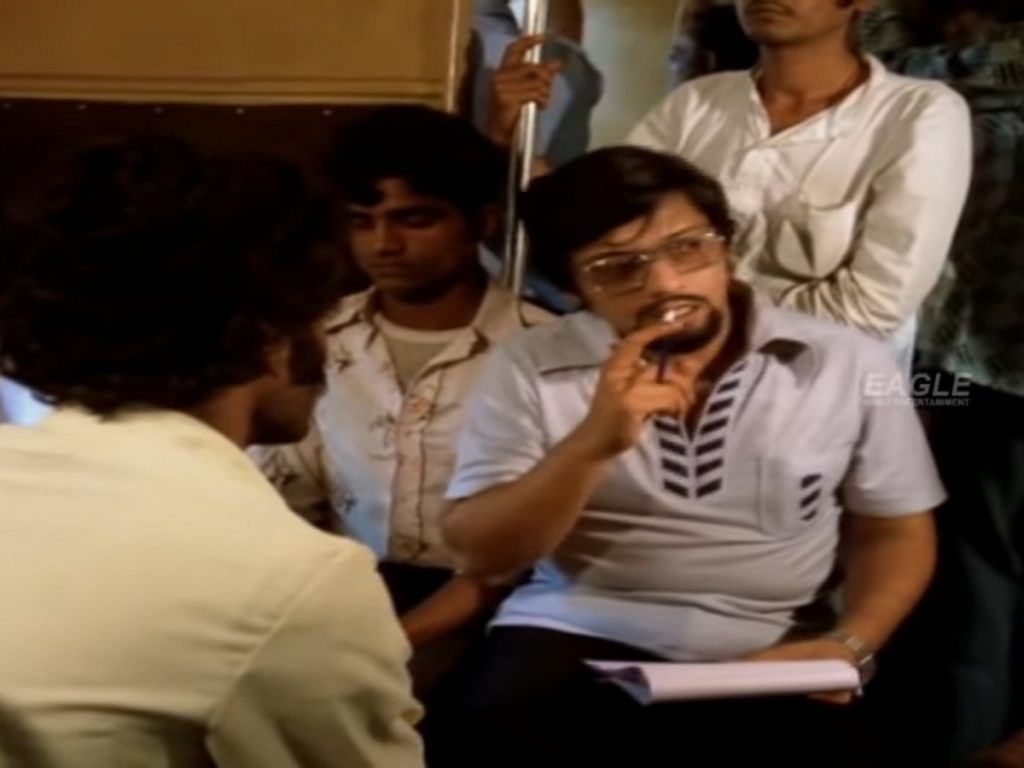
But he also tipped his hat to the people and institutions that shaped his career.
In Chhoti Si Baat, when Arun follows Prabha near Mantralaya, he pauses to get his shoe polished. Look closely and you’ll spot a Blitz poster—a nod to Rusi Karanjia’s magazine that helped launch Basu Da’s early career.
Basu Da’s films also made sure to give viewers a taste of Bombay. From glimpses of Flora and NanKing to Pomposh, his love for Bombay’s eateries was clear. In Chhoti Si Baat, when Prabha visits Arun at Samovar Café at Jehangir Art Gallery, a cheeky Asrani joins their table and orders a Chicken Alapoos. But there never was such a dish and the café staff had to issue a clarification after the film’s release. Samovar shuttered in 2015.
The walk nears its end at what is said to be the former Blitz office in St Vitrang Chambers.
A stone’s throw away is Yazdani, a long-standing Irani bakery. “Basu Da must have frequented it,” one group member remarked. Sharma concurred, adding that the director probably “indulged in a bun maska” now and then.
“Today, we may not find Basu Da’s Bombay anymore—it can only be imagined,” said Sharma. “It’s important to immortalise the city of Bombay for future generations, and cinema is the way to do that, with its history and heritage.”
(Edited by Asavari Singh)



